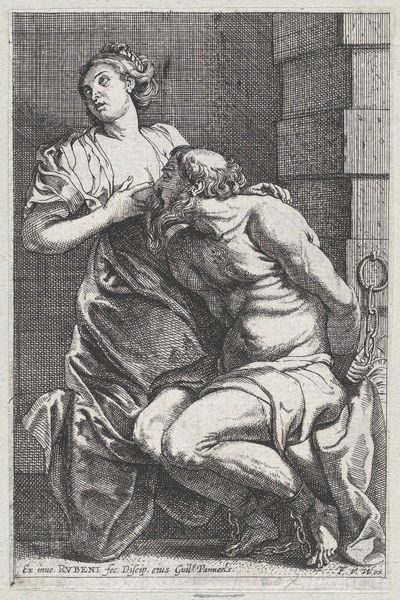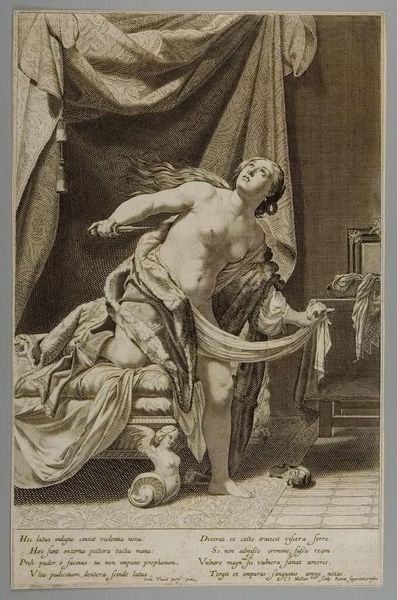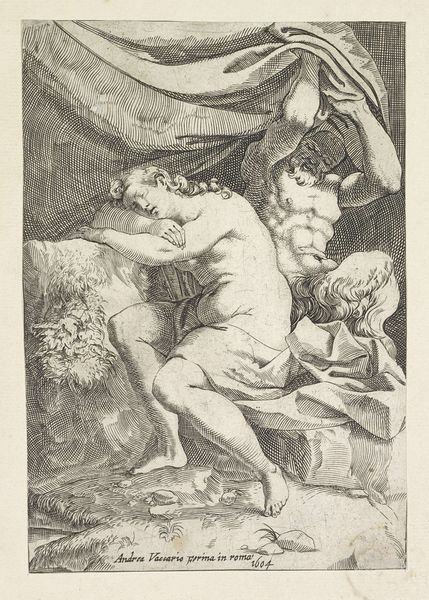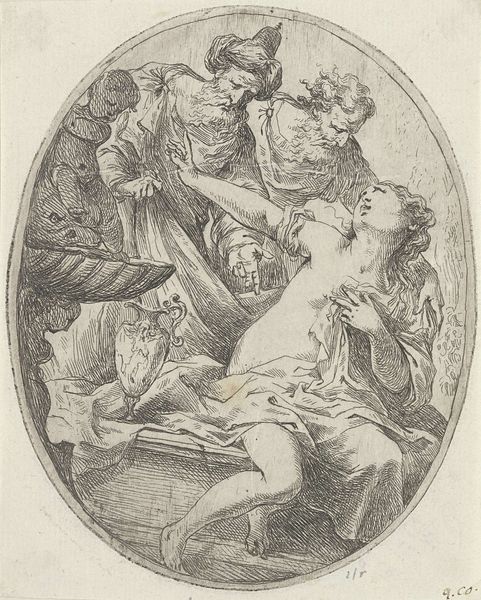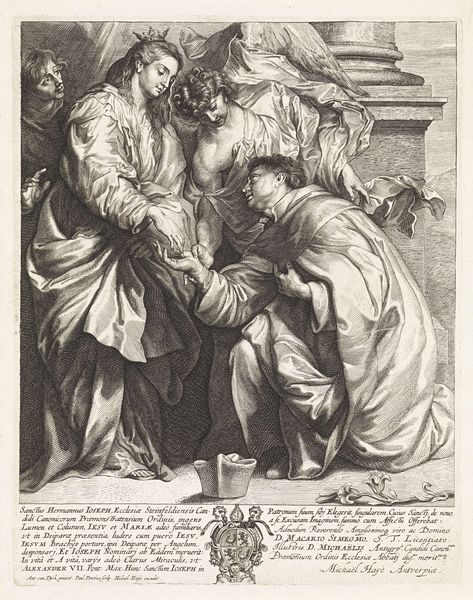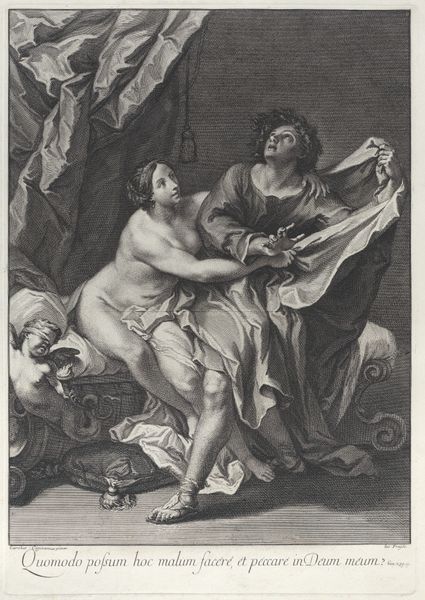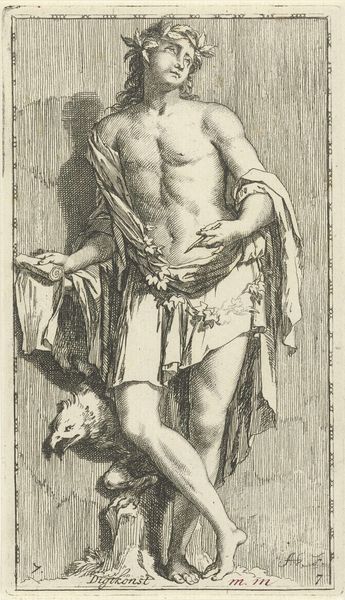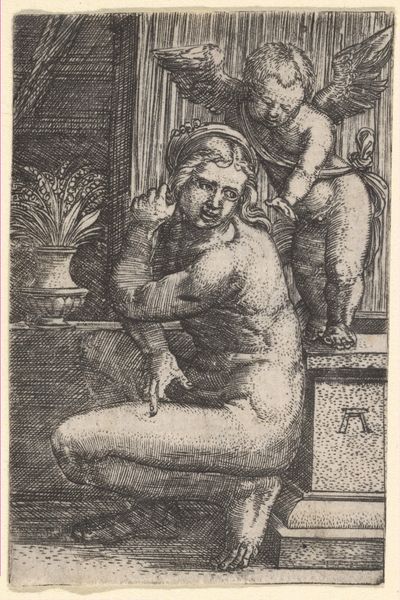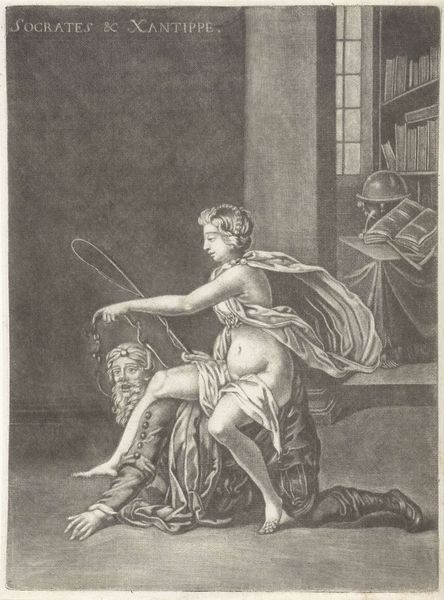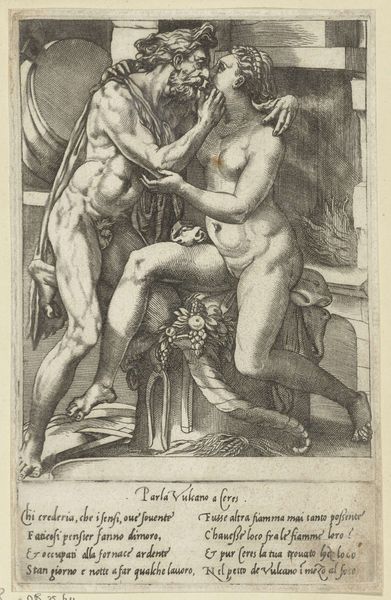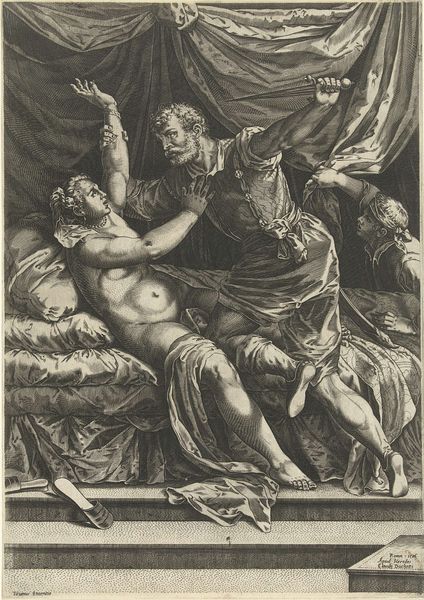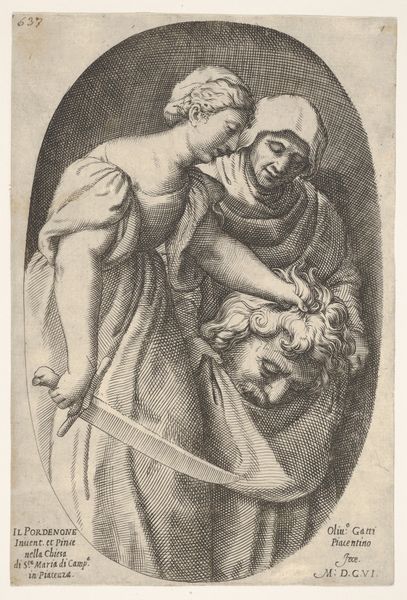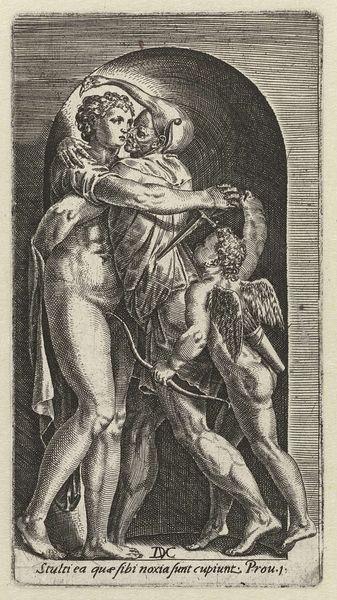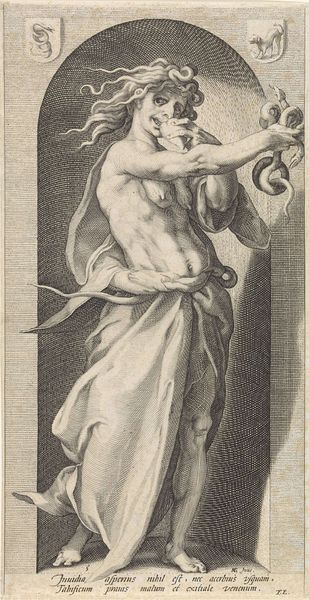
drawing, print, engraving
#
drawing
#
baroque
# print
#
figuration
#
female-nude
#
history-painting
#
nude
#
engraving
#
male-nude
Dimensions: Sheet (Trimmed): 5 5/16 × 3 5/8 in. (13.5 × 9.2 cm)
Copyright: Public Domain
Editor: Here we have "Cimon and Pero", an engraving dating from the Baroque period. What strikes me is the intimate, almost uncomfortable, relationship depicted. How should we interpret this from a historical perspective? Curator: It's definitely a loaded image! From a historical perspective, let's consider this: it represents a famous story about filial piety, of a daughter saving her imprisoned, starving father by breastfeeding him. What's key is that, during this period, the tale was ripe with socio-political messaging. The narrative was often deployed to praise acts of charity and selflessness, particularly among women, but also reinforced patriarchal family structures. Editor: So, it's not just a heartwarming story, but a message about societal roles. I see the "good" daughter portrayed feeding her father but I feel this image of filial piety romanticizes this self-sacrificing behavior. What kind of symbolism is evident in the visual composition? Curator: Exactly. Note the stark contrast between Pero's nurturing act and Cimon's helpless, chained state. Visually, that emphasizes the power dynamics – the daughter temporarily subverting the law, becoming a maternal figure, to uphold a moral imperative rooted in familial duty. But it's framed in a way that reinforces societal expectations of female sacrifice. Also consider that we might think this a nude by today's standards. How was the imagery received in that time? Editor: That's fascinating. So, looking at this work, I now appreciate the complex layers beneath the surface. It's not just about a daughter's devotion; it’s about how art can reflect and reinforce societal norms, even in acts of seeming rebellion. Curator: Precisely! And remember, the print medium allowed for wide distribution, meaning this visual message about appropriate roles reached a vast audience. These images actively shaped public opinion. Now, what do you think about the act portrayed here after we've considered the implications in a broader cultural context?
Comments
No comments
Be the first to comment and join the conversation on the ultimate creative platform.
